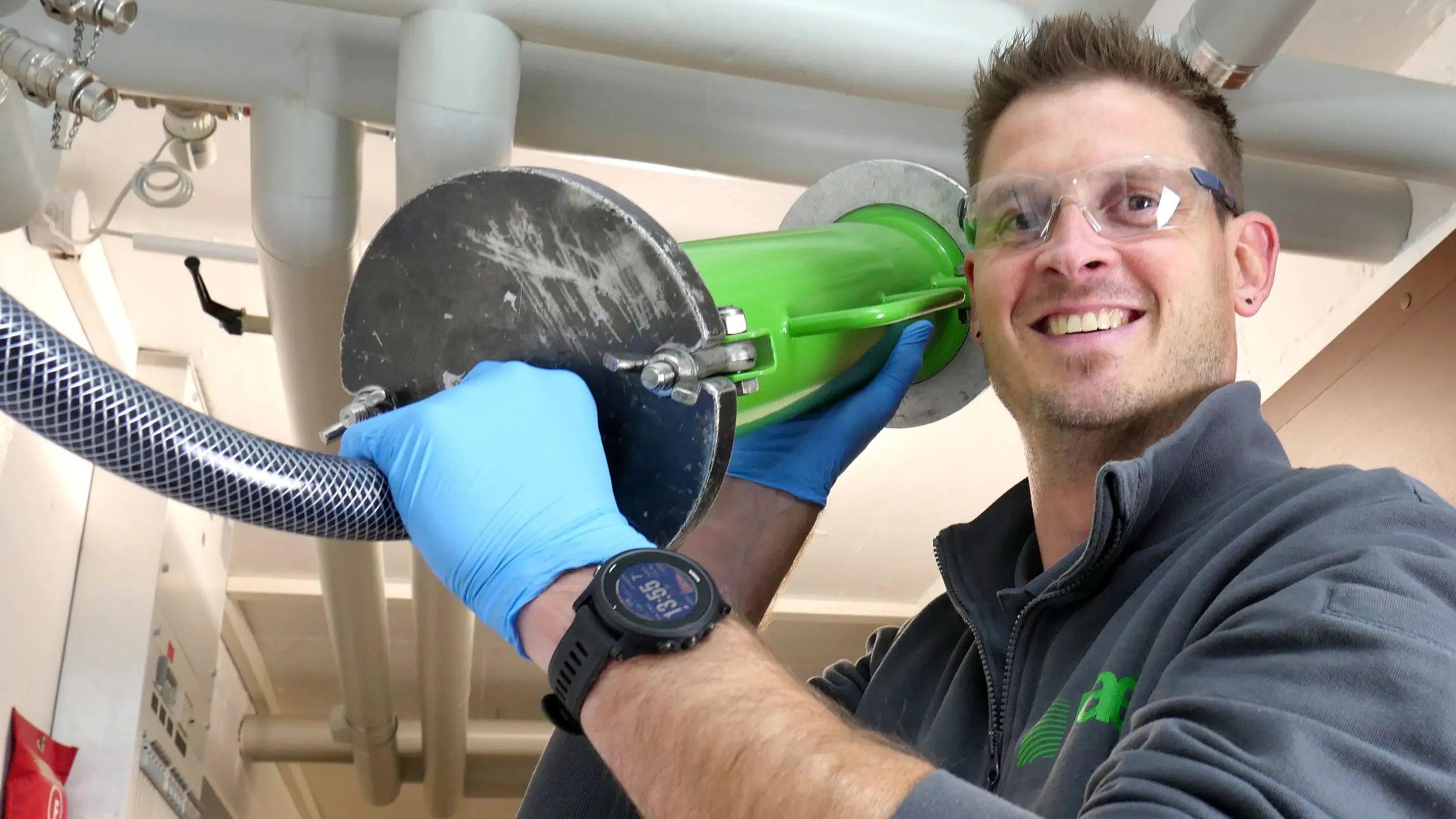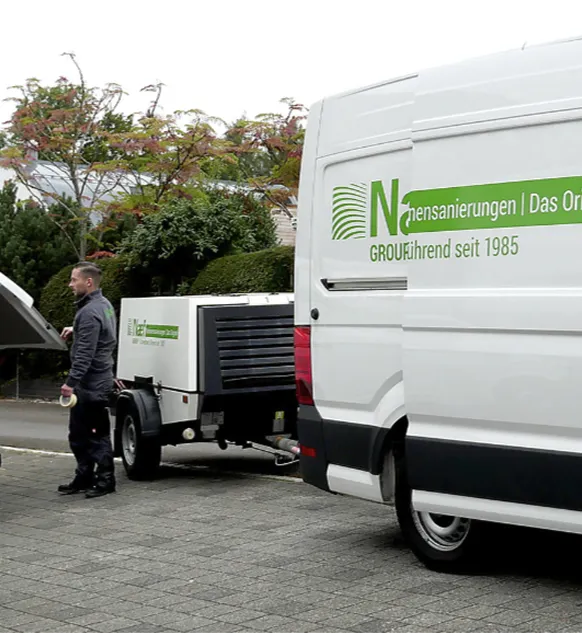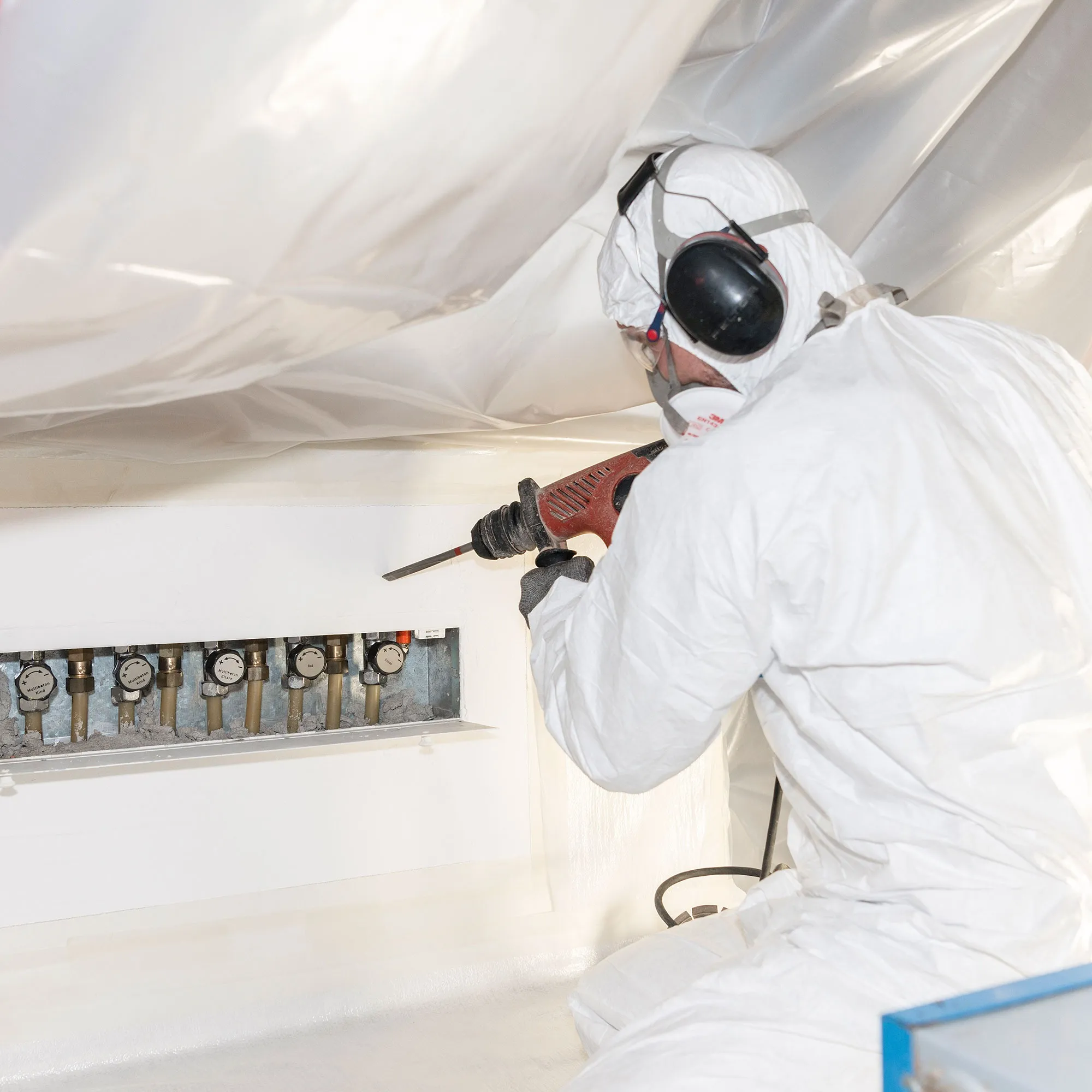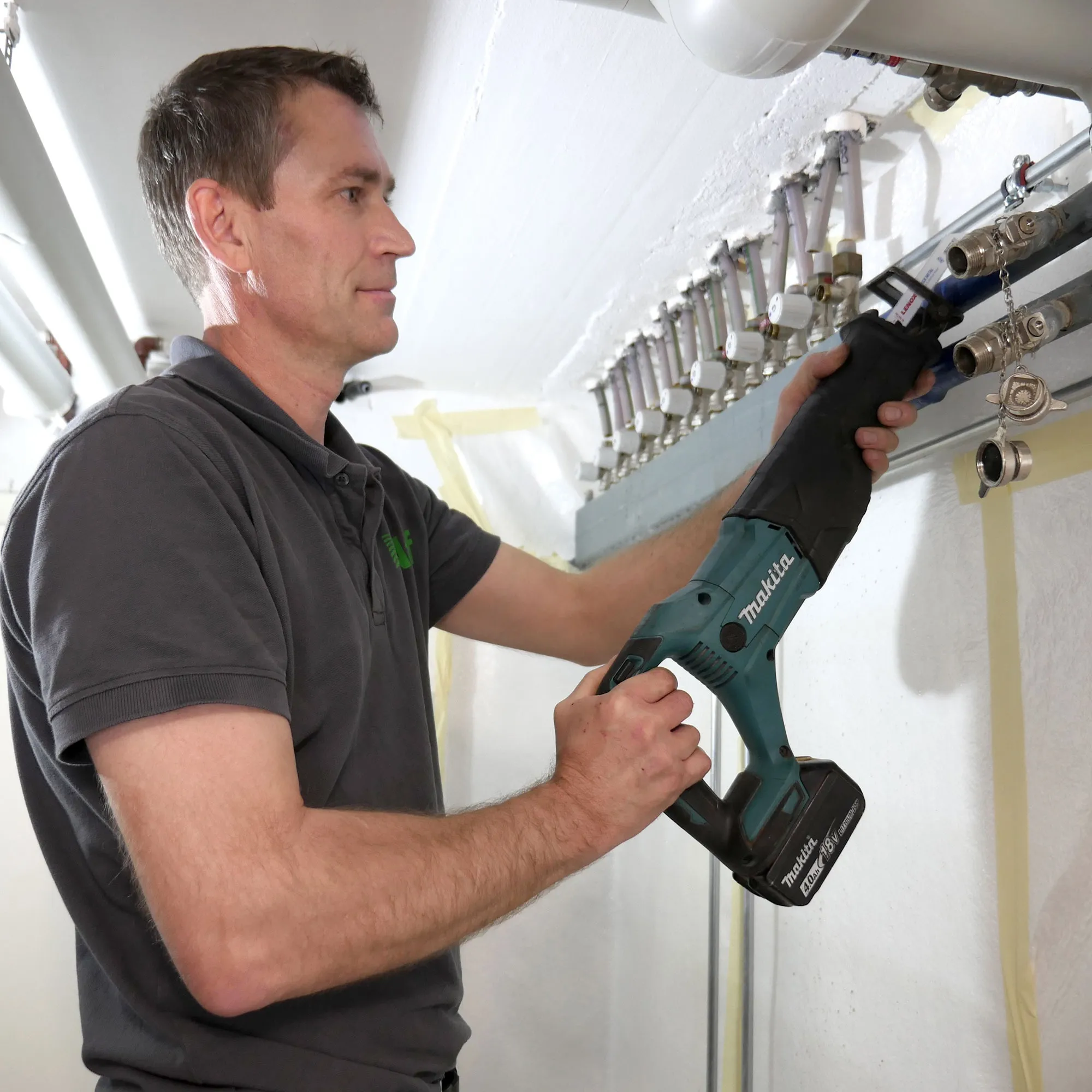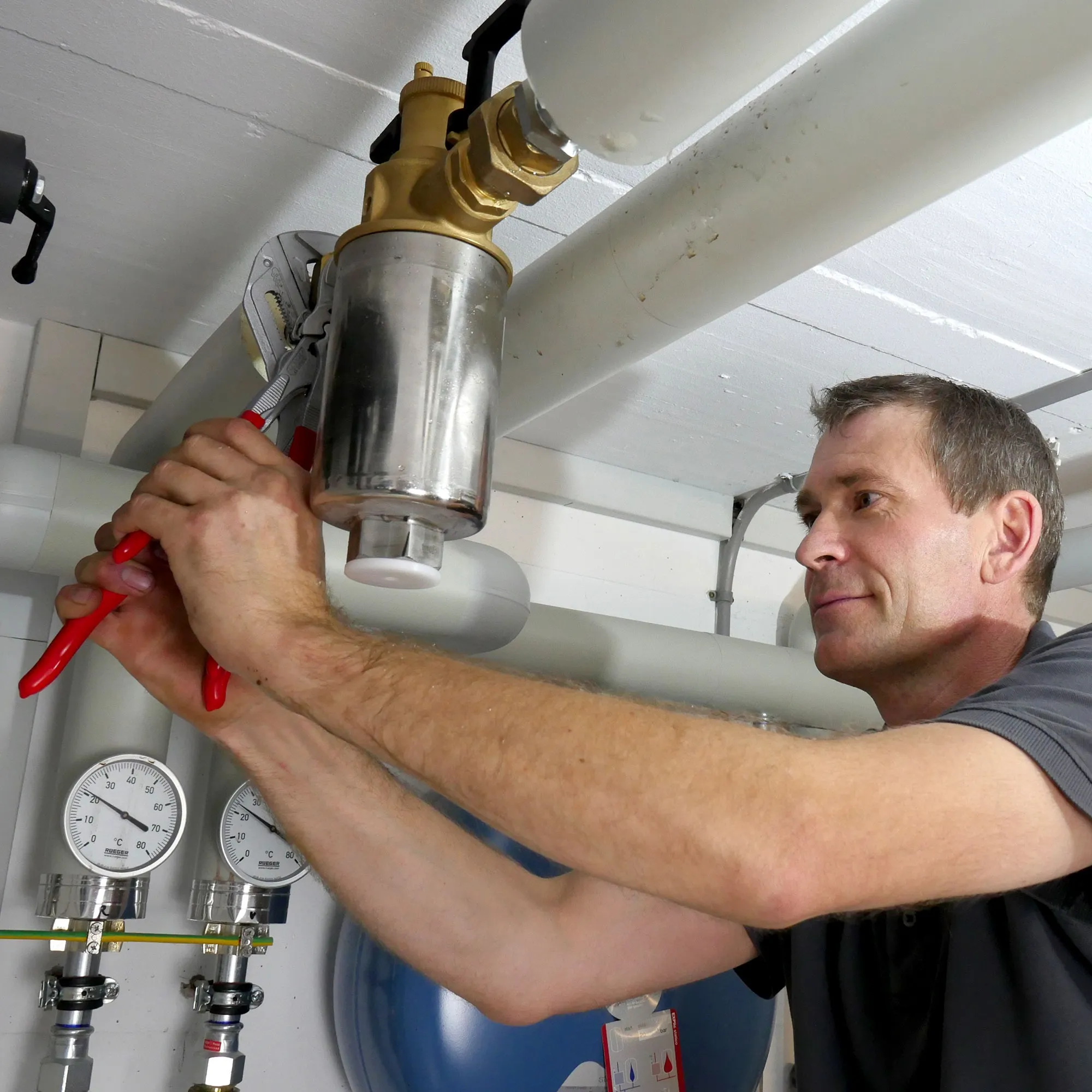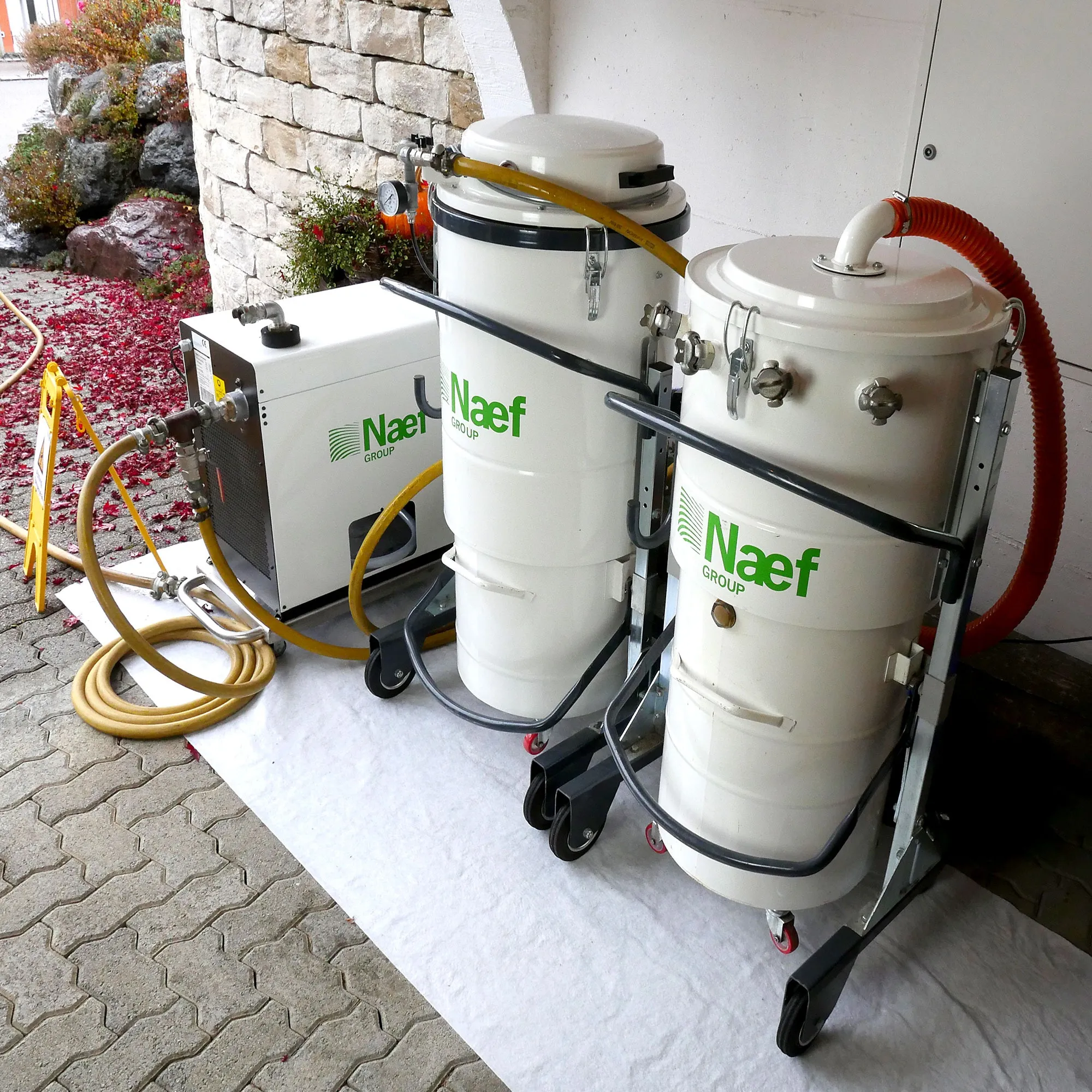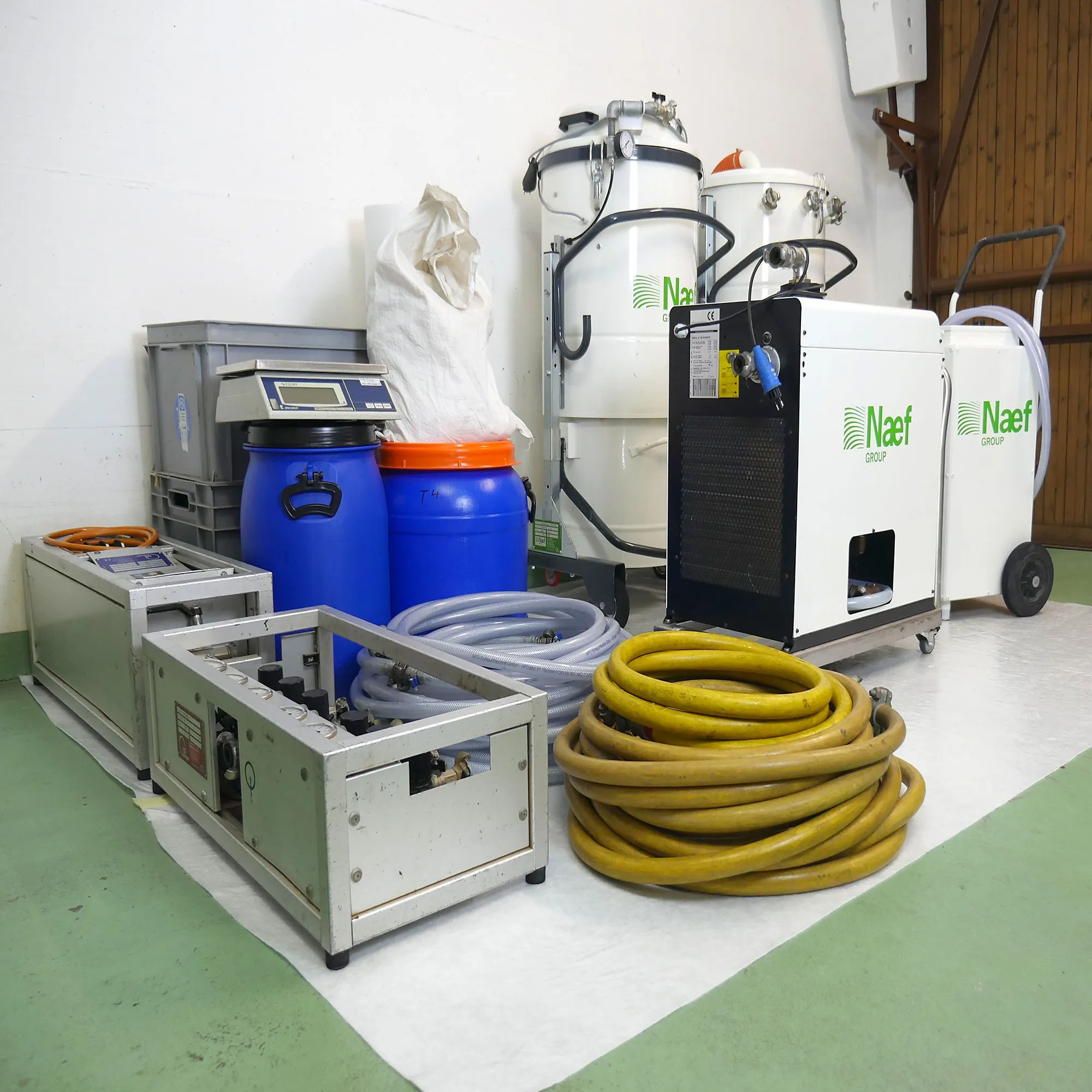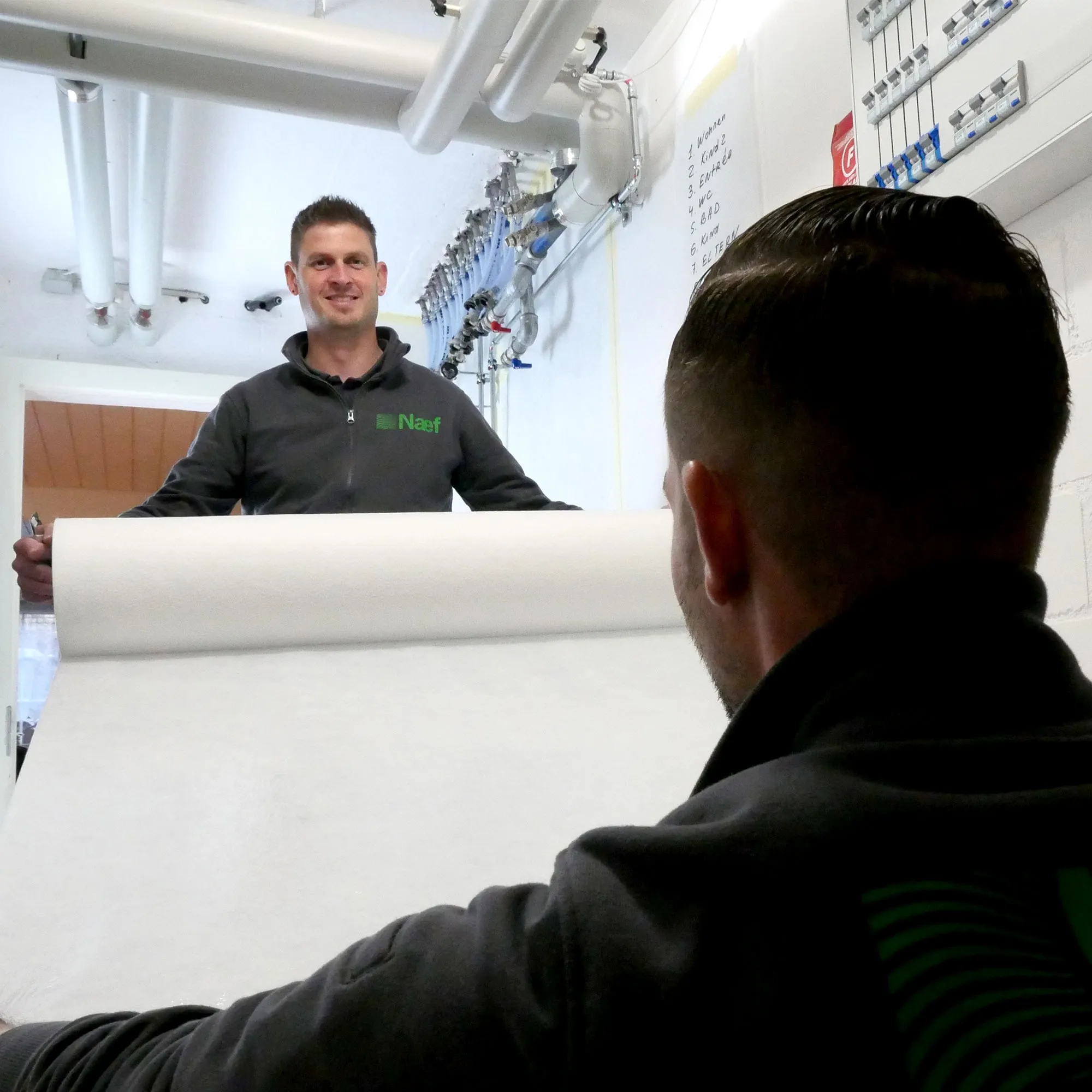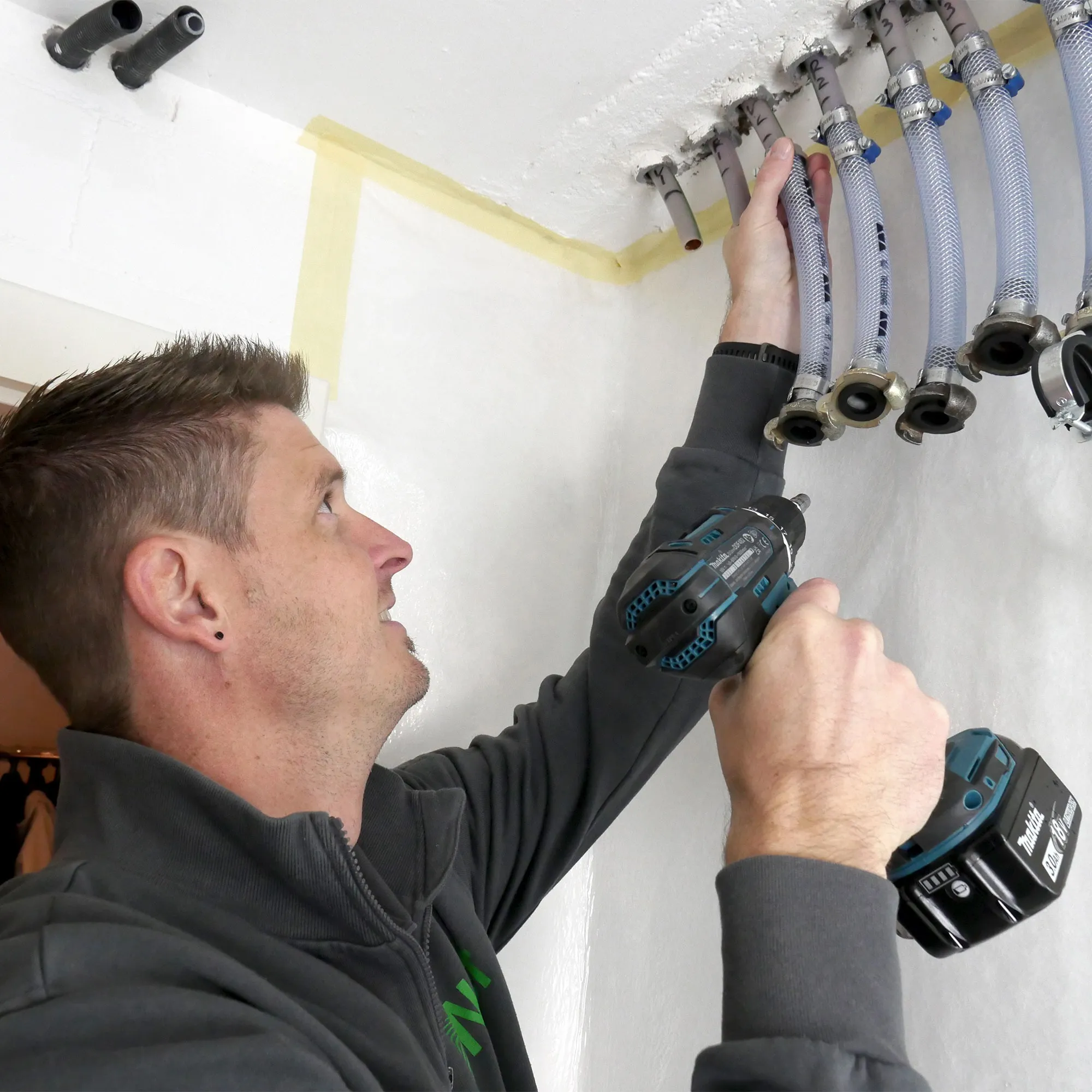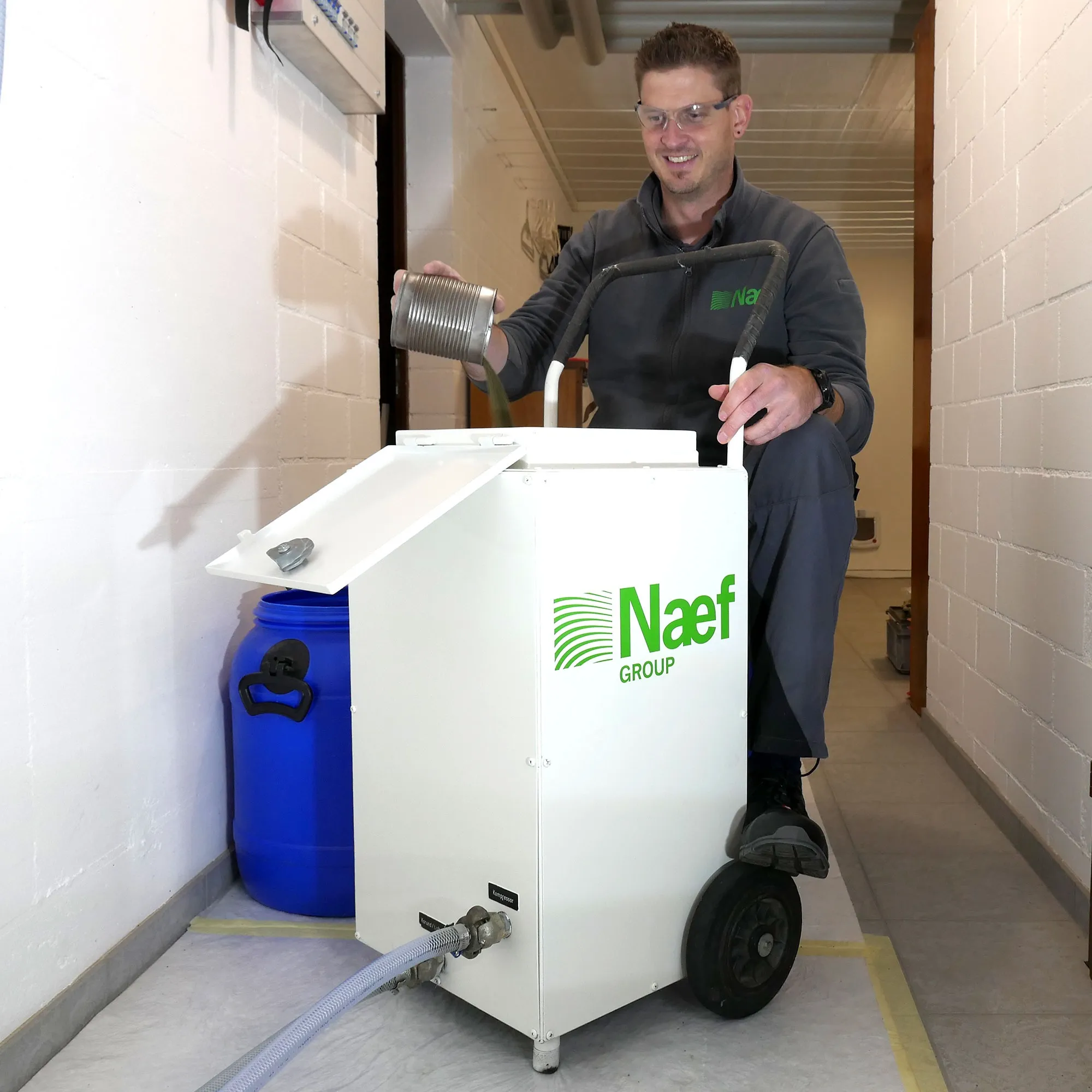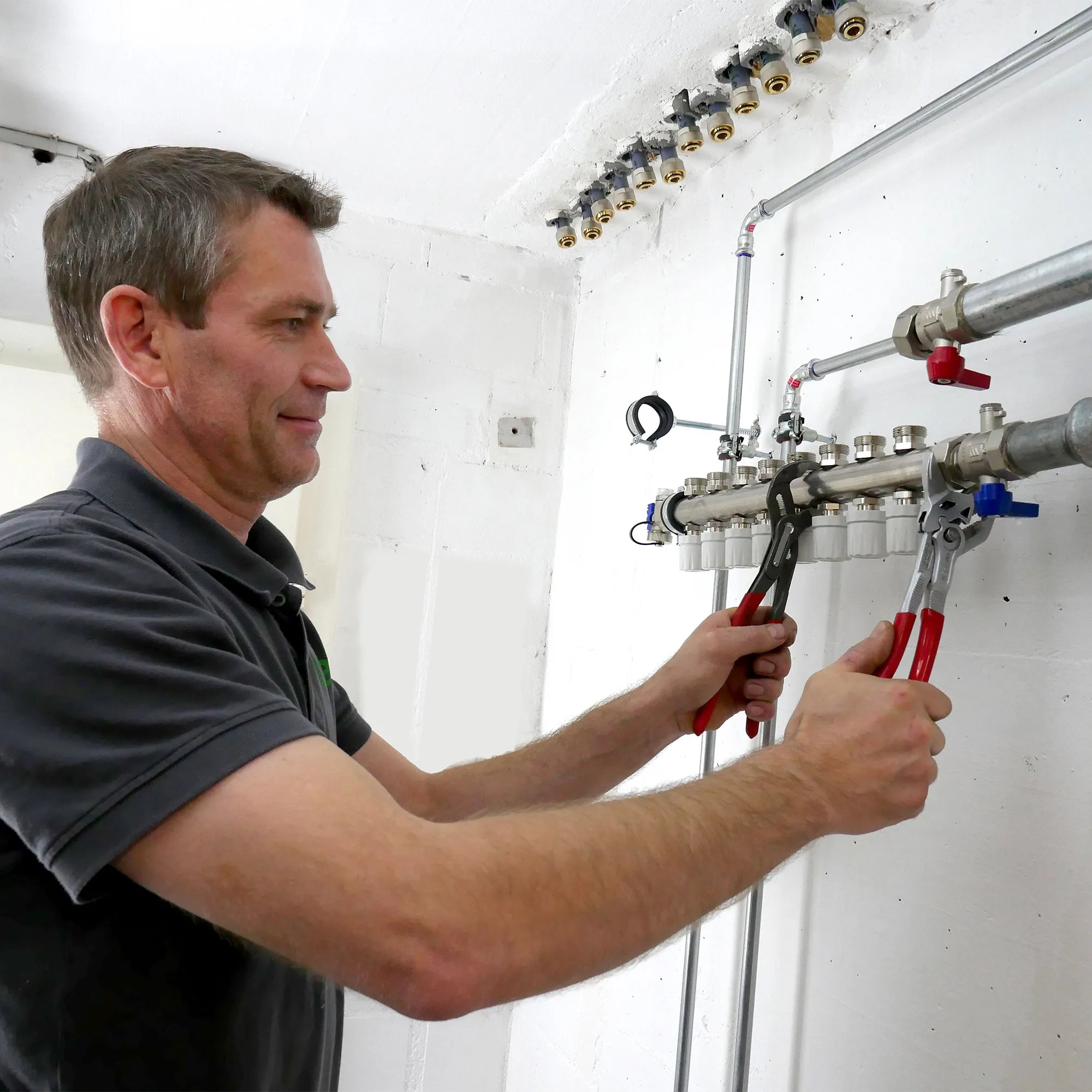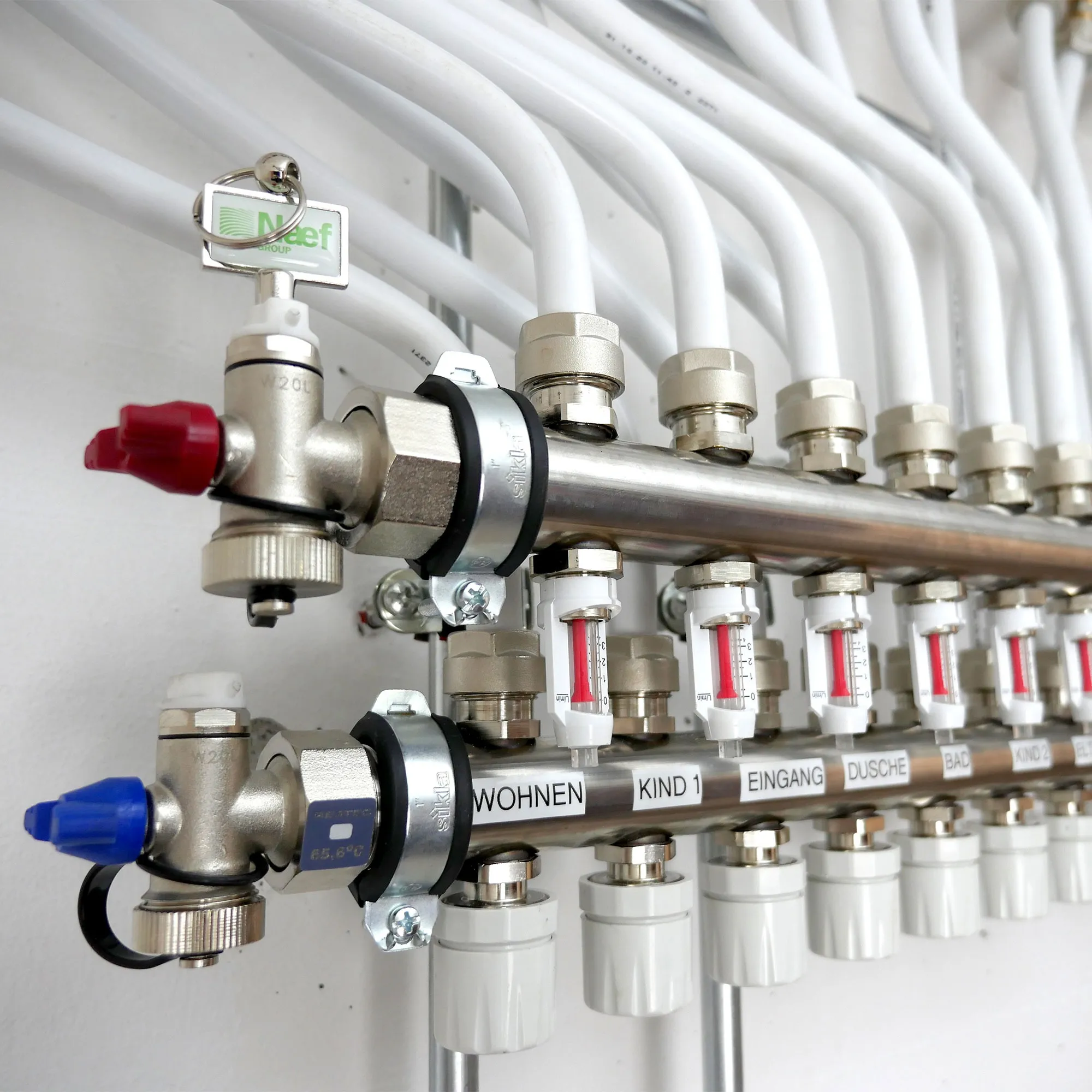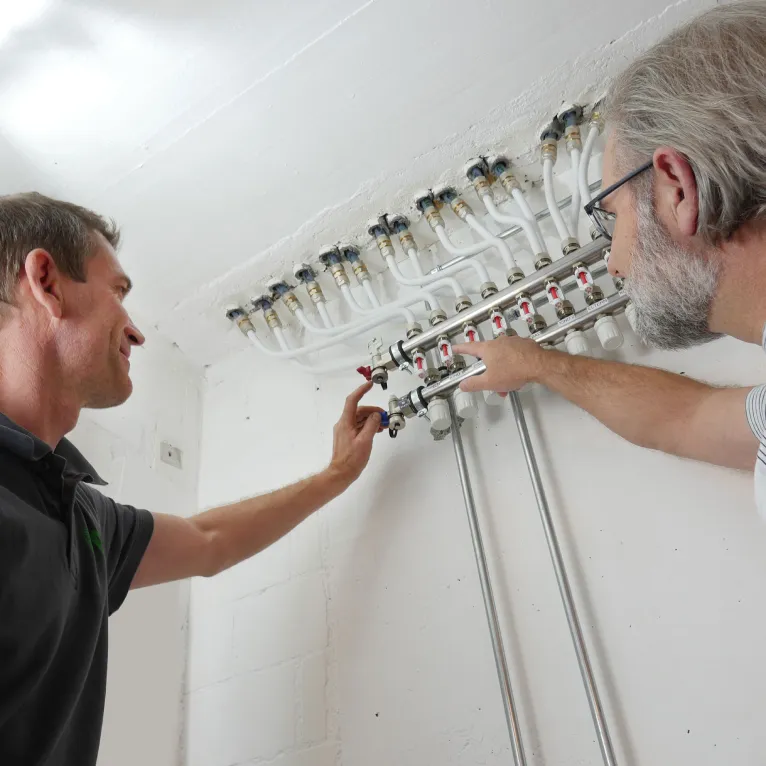
Renovate underfloor heating using the original
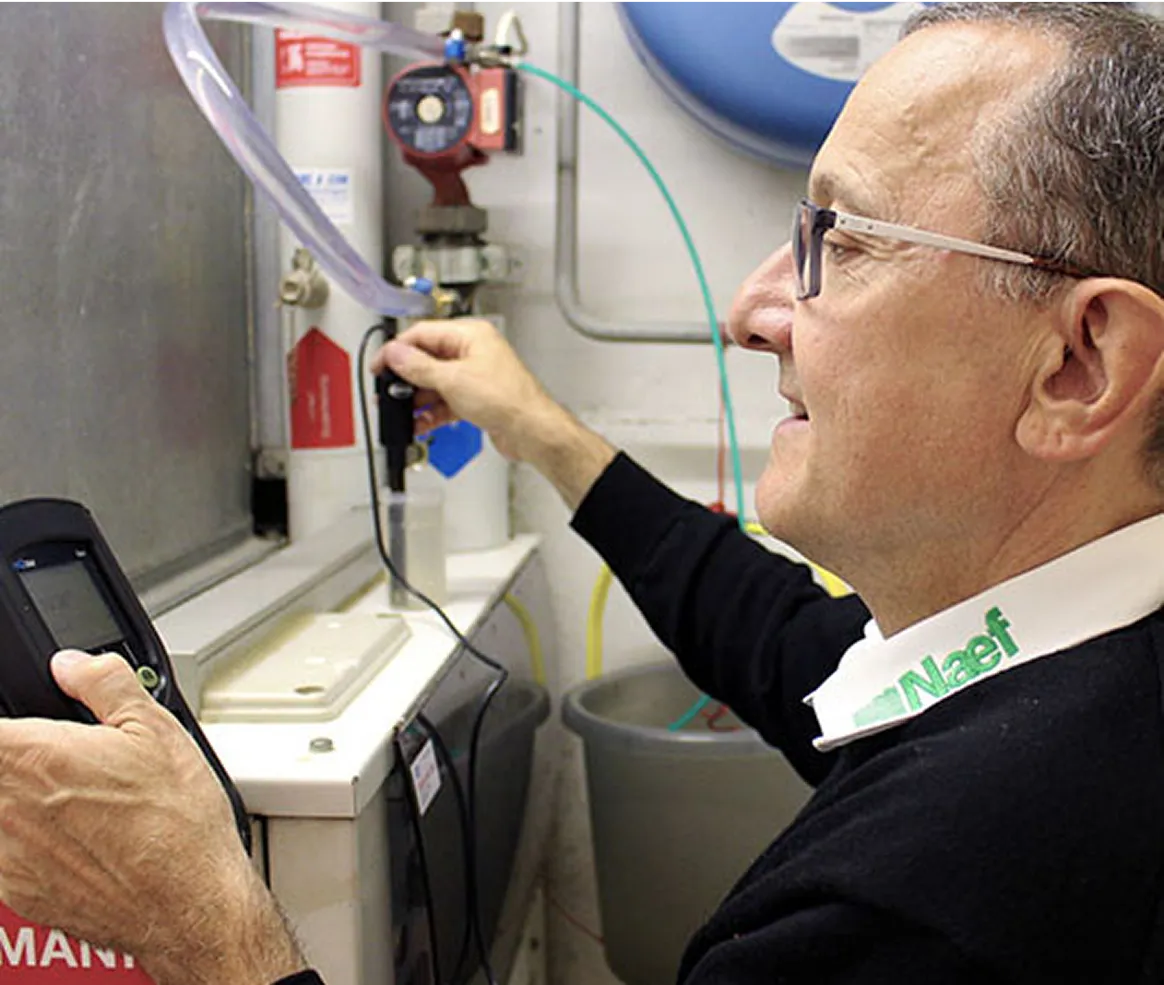
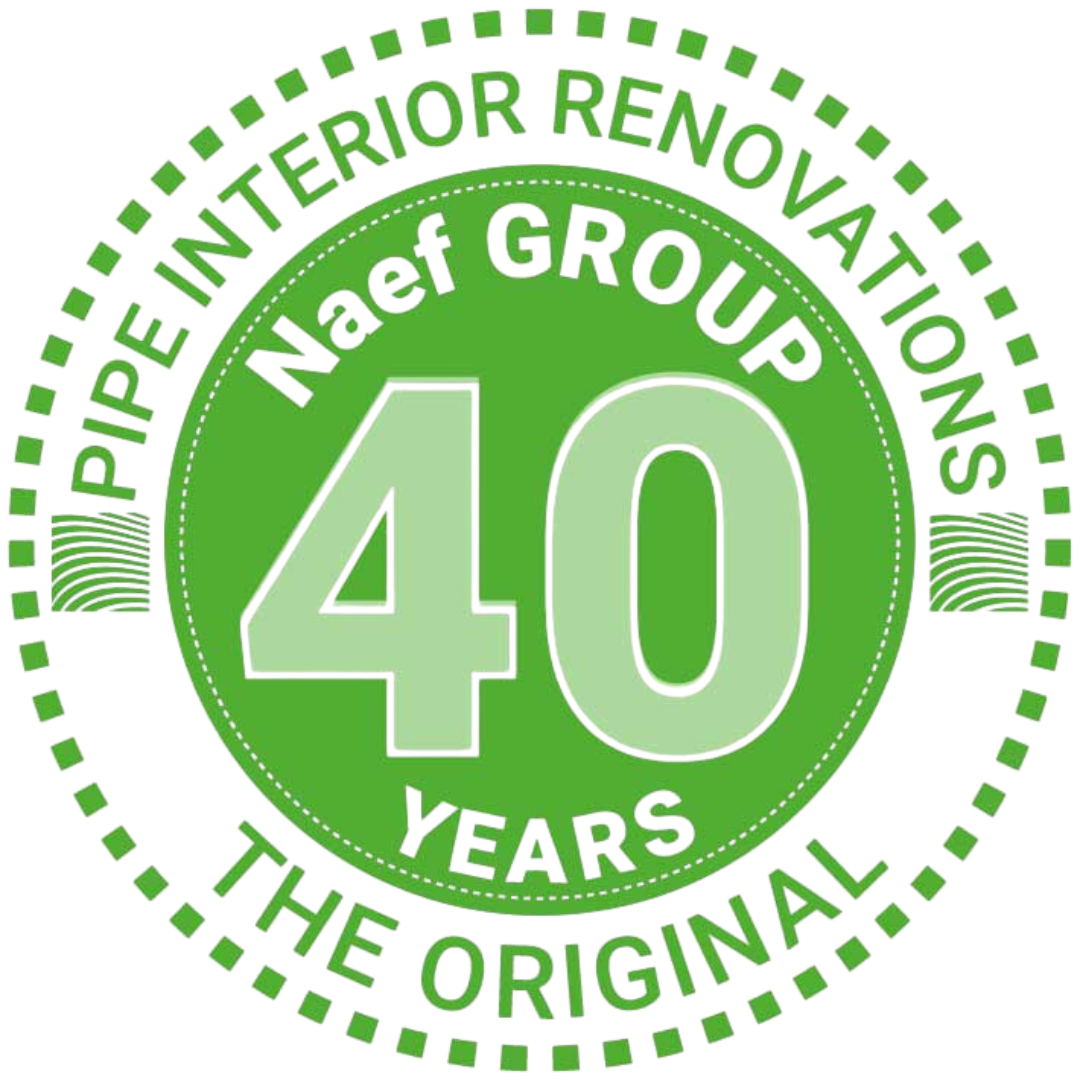
Head of Department HAT-System during status analysis
Our analysis will give you clarity
Reliable water analysis
Our experts determine a total of six values based on a water analysis and assess them in accordance with the applicable SWKI guidelines. If there are substantial deviations from the defined reference values for one or more parameters, we will develop solutions for your system. We will give you a detailed analysis protocol together with a catalogue of measures that gives you complete transparency and a sound decision-making basis. Thermography images from a thermal imaging camera supplement the analysis and identify defects in heat distribution if necessary.
Embrittlement measurement
From time to time, we are asked about brittleness measurement. The ageing of pipes is examined by physical tests. In order to achieve a reliable result, samples must be taken from different areas of the underfloor heating, which requires extensive floor openings. In many cases, samples are only taken from the distributors, which is not sufficient since the embrittlement of a floor heating pipe can vary greatly over its entire length. The embrittlement in the bends is often greater due to the constant tension. Therefore, we advise against such tests, especially if samples are only taken in the visible locations.
We are celebrating 40 years of pipe interior renovations
The problem with underfloor heating

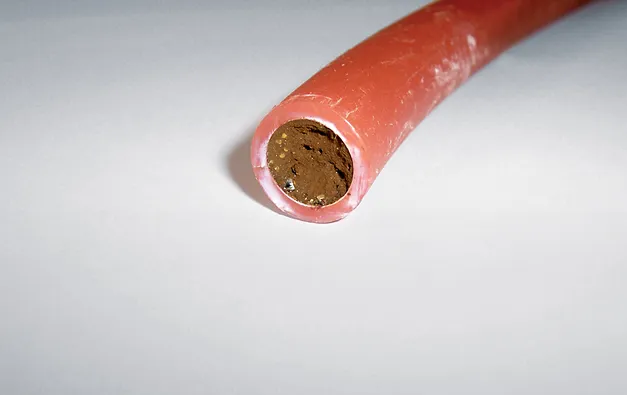


The oxygen input, which increases with embrittlement, causes further corrosion processes on the metal components, while the sludge progresses. Higher flow temperatures usually compensate for the heating’s decreasing efficiency. It is a vicious circle, as this further accelerates the embrittlement process of the plastic. The heating circuits are even more stressed by the excessive operating temperature. Leaks and water damage then crop up, and it becomes inevitable that the entire underfloor heating will need to be replaced at some point. Therefore, you should have a professional condition analysis carried out if you see the following signs.
Sustainable renovation of underfloor heating using the HAT system
Is renovation necessary and feasible according to the status analysis? Then we can offer you the original HAT system for interior underfloor heating renovations. We have been renovating old floor heating pipes since 1999, making them diffusion-tight in accordance with DIN 4726. And all without the need for a construction site.
The first step in a renovation is to completely dry the pipes with specially prepared compressed air. This is followed by internal cleaning with a gentle, chemical-free, delicate finish inside the pipes, to remove mud residues and incrustations. Each pipe is then evenly coated from the inside using a specially developed coating material. Once it has been left to dry for 48 hours, this coating will have created a new pipe within the old one, which can then connect to the existing plastic pipe. The coating provides long-term protection for the old underfloor heating and makes it waterproof against any diffusion in accordance with the DIN 4726 standard. We are the only company that can provide this level of work. We renovate underfloor heating within a very short period of time and with a minimum of noise and dirt emissions. A pipe renovation is around 10 times faster and much cheaper than a total replacement. You can still use your rooms during the renovation work. With our HAT system, we can demonstrably extend the functionality and durability of your underfloor heating by at least 20 years.
The problem with underfloor heating
Analysis of underfloor heating
Renovation using the HAT-System
.webp)

Let us inspire you – our testimonials
We renovate around 1,000 properties every year. For us, having satisfied customers is not enough. We want to inspire you. We strive to receive the very best customer ratings, and work hard to achieve this goal – which makes the positive feedback we regularly receive even more satisfying. Thank you very much for your trust in us and our services.
Total pipe interior renovation completed to the highest standard. The timing in January was perfect, as the impressive oil-saving effect was immediately apparent. I would highly recommend the Naef GROUP and its competent team.

Erwin Bänteli
The pipe renovation in our entire building was carried out cleanly, efficiently and neatly. We are very satisfied with the information provided and the work performed.

Martin C. Huber
After hearing the positive experiences of two colleagues, we had our 39-year-old underfloor heating renovated by the Naef GROUP – and we were not disappointed. All employees of the Naef GROUP were very professional, competent and friendly, from the preliminary assessment to the follow-up work stage. The job was completed very neatly and precisely, and finished exactly on schedule.

Ruedi Grunder
Frequently asked questions about the renovation of underfloor heating
Pipe interior renovation is a procedure that cleans underfloor heating pipes or drinking water pipes from the inside and provides them with an internal coating. This is done without having to excavate floors or walls. First, the pipes are gently cleaned and dried, and then lined with a special coating, which protects the existing pipes from further ageing processes and creates a new “pipe within the pipe” that significantly extends the service life.
The renovation is usually completed within a few days, depending on the project scope. Your rooms remain habitable throughout the entire job, with only minimal disruption. Thanks to the process used, there is no need to rip up your floors, which keeps dirt and noise emissions to an absolute minimum.
Pipe interior renovation is significantly faster and cheaper than a complete replacement. Unlike pipe replacement, which requires floors or walls to be torn open to replace entire sections of piping, pipe interior renovation preserves the existing installation. The renovation extends the service life of the pipes by a generation. The environmental impact is also lower, as renovation generates less waste and ensures the continued use of existing resources.
Following renovation using the HAT system, pipes are once again resistant to diffusion according to DIN 4726. The service life has been proven to be extended by one generation. You therefore benefit from a sustainable solution that ensures stable heating performance and provides protection against further damage.
Yes, renovation is particularly beneficial for older underfloor heating systems that were installed between 1970 and 1990 and contain pipes made of simple plastic. These types of pipes are particularly susceptible to embrittlement and the build-up of sludge. Renovation is therefore the ideal solution for extending the service life of such systems.
No, there is no need to move out. The renovation is carried out in a way that ensures your rooms remain habitable during the entire period of work. It does not require large construction areas or impose significant restrictions on everyday life. The work causes only minimal noise and dirt emissions.
A consultation that makes all the difference
Ein Beratungsgespräch, das den Unterschied macht


